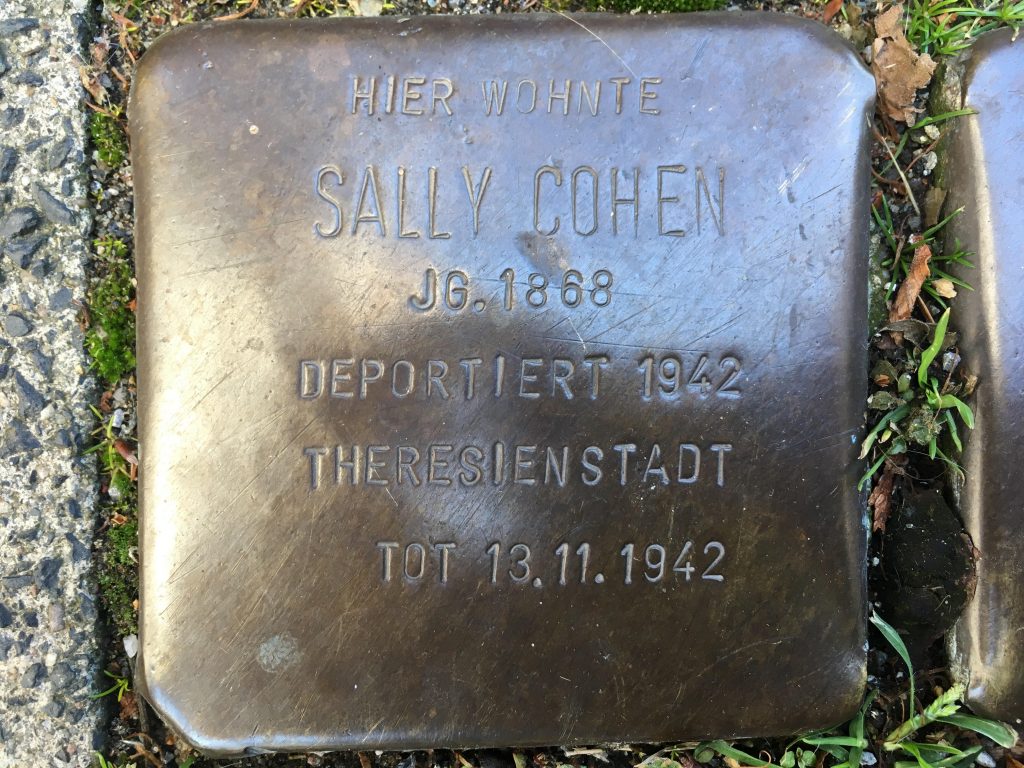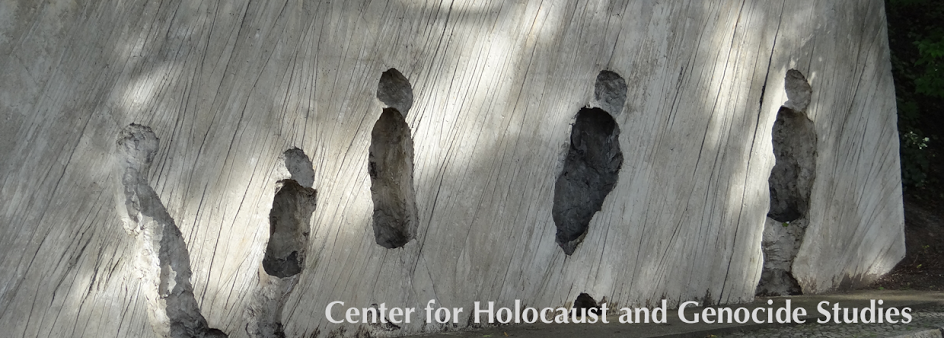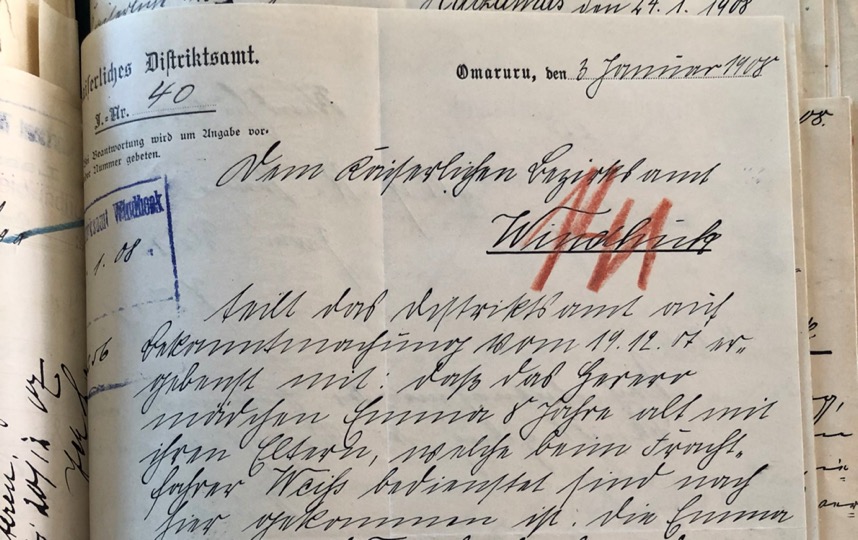Everybody has a family narrative or childhood story to tell. Elizabeth Warren’s is about her Native American ancestor; my mother’s about her German Jewish neighbor. And while Elizabeth Warren’s ancestor remains elusive, my mother’s neighbor and what I heard about him growing up has become more concrete over the years. It literally became concrete when in 2005 a Stolperstein (stumbling stone) bearing his name was installed in front of the house he had owned before he was deported and murdered in Theresienstadt.

Here is the story my mother told me. It was in late 1941 when she noted that Sally Cohen, an older gentleman and respected citizen (so she thought) had to wait in the corner of the neighborhood bakery store until everybody else was served. She also noted that he was now wearing a monstrous star-shaped yellow badge that said, “Jude.” My mother was 11 at the time and to this day hasn’t forgotten the sad and embarrassed look on Herr Cohen’s face. When she asked the adults why Herr Cohen was treated that way, she was told not to worry and that all of this was mandated by a new law.

